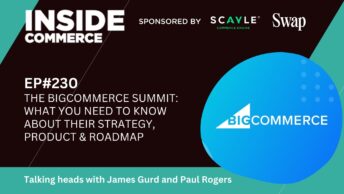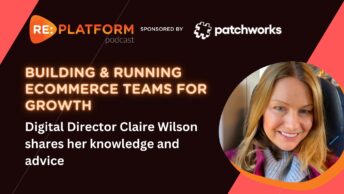An interview with ASKET Head of Data & Technology and the cofounder at their development partner Made People, exploring the impact of adopting a headless commerce model.
Listen on your favourite player
Watch the video
Tl;dr
- Why headless was the right approach
- Systems landscape overview and reasoning
- Selecting a suitable front-end and CMS
- Introducing a PIM
- Approaches to data management: data warehouse, CDP, BI
ASKET boldly states that the world doesn’t need another fashion brand. Their definition of progress is reduced wardrobes and people spending more on items that last for longer. They adopt the same approach to their tech stack, investing in the best fit and quality systems to help them deliver the business vision.
In this episode we caught up with ASKET’s Head of Data & Technology, Vidar Trojenborg, and Jonathan Selander, cofounder at their development partner Made People.
Discussion notes
- Jonathan, you’ve worked with Centra on multiple projects – what about Centra makes it a good platform for a development agency like yours to work with?
- What made you identify headless as the right architectural approach for ASKET, what issue was it intended to address and what opportunities did you identify?
- We were impressed by the elegance of the overall tech stack, can you talk us through how you’ve got to the current setup and what systems are being used for what?
- What does your tech resource set-up look like, as in what roles do you have in-house vs. what’s done by Made People and how did this change when you went headless?
- Centra doesn’t include a front-end, so what front-end stack does ASKET use and what content management tools is the business using?
- Please can you talk us through what front-end solution you agreed on for ASKET and why you reached this decision , as there are so many front-end options available it can be hard to know the difference between them & speed/performance is so important
- At the London talk you were passionate about avoiding syncing between systems, can you explain why data sync is a bad idea, what problems it causes, and how do you handle data mirroring, what tools are being used?
- I liked how you explained the decision and process to introduce Akeneo as your PIM. What made Akeneo the right fit, it’s a market leader but also higher licence fee that some alternatives
- What business improvements has introducing a PIM delivered, is it mainly process efficiency or are you seeing data quality improvements?
- You mentioned that Tableau has changed how you use data – can you give some examples of how this has improved how you work and help you be more data-driven
- Segment has a lot of functionality – what are you focused on, which parts of the business are using it the most?
- What most excites you about Centra and its product strategy?
Want to suggest a topic or guest for a future episode? Contact us via the website or on LinkedIn.







